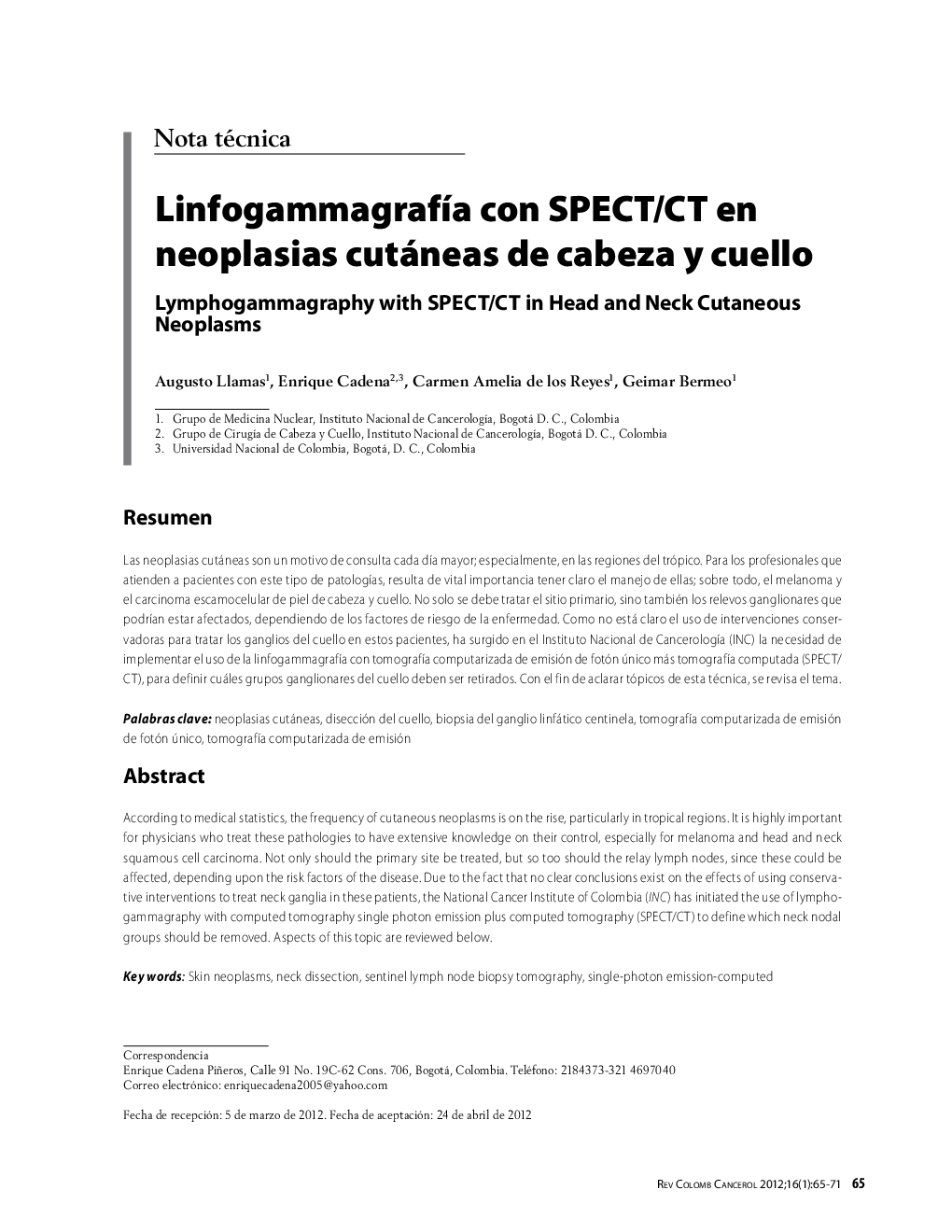| Article ID | Journal | Published Year | Pages | File Type |
|---|---|---|---|---|
| 3997331 | Revista Colombiana de Cancerología | 2012 | 7 Pages |
ResumenLas neoplasias cutáneas son un motivo de consulta cada dÃa mayor; especialmente, en las regiones del trópico. Para los profesionales que atienden a pacientes con este tipo de patologÃas, resulta de vital importancia tener claro el manejo de ellas; sobre todo, el melanoma y el carcinoma escamocelular de piel de cabeza y cuello. No solo se debe tratar el sitio primario, sino también los relevos ganglionares que podrÃan estar afectados, dependiendo de los factores de riesgo de la enfermedad. Como no está claro el uso de intervenciones conservadoras para tratar los ganglios del cuello en estos pacientes, ha surgido en el Instituto Nacional de CancerologÃa (INC) la necesidad de implementar el uso de la linfogammagrafÃa con tomografÃa computarizada de emisión de fotón único más tomografÃa computada (SPECT/CT), para definir cuáles grupos ganglionares del cuello deben ser retirados. Con el fin de aclarar tópicos de esta técnica, se revisa el tema.
According to medical statistics, the frequency of cutaneous neoplasms is on the rise, particularly in tropical regions. It is highly important for physicians who treat these pathologies to have extensive knowledge on their control, especially for melanoma and head and neck squamous cell carcinoma. Not only should the primary site be treated, but so too should the relay lymph nodes, since these could be affected, depending upon the risk factors of the disease. Due to the fact that no clear conclusions exist on the effects of using conservative interventions to treat neck ganglia in these patients, the National Cancer Institute of Colombia (INC) has initiated the use of lymphogammagraphy with computed tomography single photon emission plus computed tomography (SPECT/CT) to define which neck nodal groups should be removed. Aspects of this topic are reviewed below.
